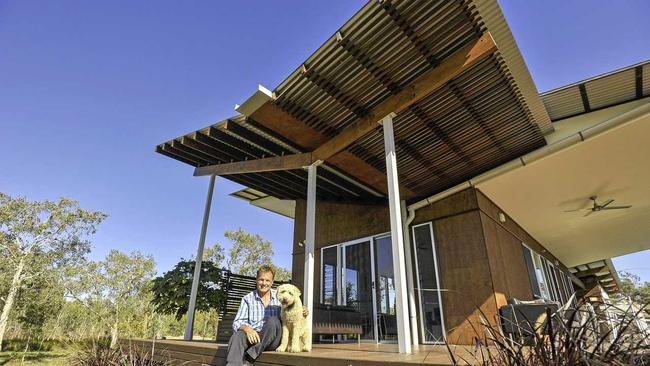'Aging-friendly design' is set to become the next frontier across urban design
Architects are redesigning the modern home design to cater to Australia's growing aging population.

Opinion
Don't miss out on the headlines from Opinion. Followed categories will be added to My News.
DESIGNING spaces for older people - Architects are rethinking the design of homes and buildings in private and public spaces. Cognitive impairment and ageing are two important aspects that need to be kept in mind while incorporating design elements, and is a challenge for architects and urban designers.
The shift in mindset toward new design features becoming commonplace was something that could not be ignored. As a population, we are living longer and we know many of us will face some form of cognitive impairment as we age. Multiple colours in floor tiles can appear to someone with cognitive impairment to be a hole in the floor, so design is ensuring floors are uniform and easier to navigate.
It is very important as rooms that are easy to navigate that can help people locate things like bathrooms quickly.
Same while designing the outdoor spaces such as gardens residents can go for a walk and easily find their way back to their starting point.
Even the treatment of light and sound is critical. During waking hours, lights need to be bright enough to account for declining eyesight, but at night it is important to eliminate as much light as possible to ensure restful sleep.
It is important to keep sounds such as alarms and buzzers to a minimum, as they can be confusing to people with cognitive impairment.
In the same way that designers now include ramps and lifts as a matter of course for people with mobility difficulties, we need to design spaces that consider cognitive difficulties as well.
No one wants to think about their mind not functioning as well as it used to, just as no one wants to think about the possibility that one day they may not be as mobile, but designing with ageing in mind means people can live independently for longer.
It means couples can stay together longer, even if one of them begins to experience some cognitive decline.
How can we best design housing for Australia's ageing population?
Few older Australians live in non-private housing such as nursing homes.
Data from the 2011 Census reveals that 94% of Australians who are 65 or older still live in private housing. More than half live with a partner and another quarter live alone. Life expectancyis nearly double what it was a century ago. And since the 1950s, a new group of young-old has evolved. These people are fit and healthy, and have little need for specialised housing.
Building agility into a house design is not difficult. Zoned houses or houses that can be easily subdivided should be encouraged within planning frameworks along with designs that allow easy retrofitting with technology, devices or design strategies to support ageing in one place.
With the number of people aged 65 and above expected to more than double by 2055, homes being built now for young families may eventually be accommodating empty-nester couples or singles.


